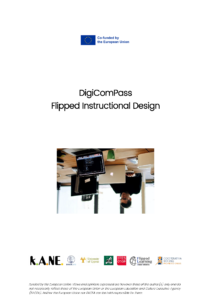The DigiComPass project team is pleased to present the Flipped Instructional Design (FID) guide, a comprehensive resource for educators seeking to implement this innovative teaching approach.
Flipped Instructional Design Guide: A Transformative Approach to Learning
The FID guide is rooted in the Flipped Learning 3.0 Framework, which emphasizes a student-centered approach to learning. This design strategically inverts traditional teaching methods by delivering instructional content outside of the classroom, primarily through digital means, allowing students to engage with materials at their own pace. Consequently, classroom time, once dominated by lectures, is now repurposed for interactive, hands-on activities that foster deeper comprehension and application of knowledge.
In the FID model, educators transition from being mere content deliverers to active facilitators, guiding students in collaborative and individualized learning experiences. Continuous assessment and a flexible learning environment further enhance the efficacy of this approach, ensuring that education is tailored to individual needs while promoting active engagement and more profound understanding.
Contents of the Guide
The FID guide provides a step-by-step guide to designing and implementing a flipped instructional environment. It covers a wide range of topics, including:
- The Flipped Learning 3.0 Framework
- The benefits of flipped instruction
- How to design and deliver flipped learning activities
- How to assess student learning in a flipped classroom
- How to create a supportive learning environment for flipped instruction
The FID guide also includes a variety of resources, such as sample lesson plans, rubrics, and assessment tools.
Why Flip Your Classroom?
Flipped instruction offers a number of benefits for both students and educators. For students, flipped instruction can lead to:
- Increased engagement and motivation
- Improved academic achievement
- Deeper understanding of concepts
- Development of critical thinking and problem-solving skills
- Enhanced self-regulation skills
For educators, flipped instruction can lead to:
- More time to provide individualized support to students
- Increased opportunities for collaboration and professional development
- Reduced stress levels and improved job satisfaction
Download the Flipped Instructional Design Guide
The FID guide is available for free download from the DigiComPass webpage. You may download the document either from the download page or here:
We encourage you to explore the FID guide and learn more about how flipped instruction can transform your teaching practice.

